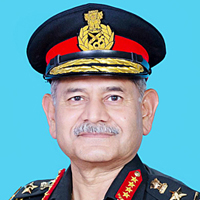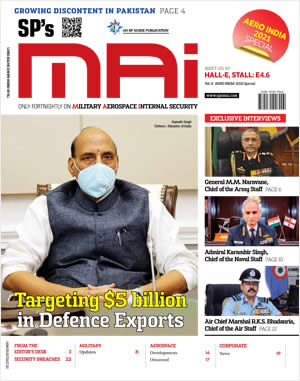INDIAN ARMED FORCES CHIEFS ON OUR RELENTLESS AND FOCUSED PUBLISHING EFFORTS

The insightful articles, inspiring narrations and analytical perspectives presented by the Editorial Team, establish an alluring connect with the reader. My compliments and best wishes to SP Guide Publications.

"Over the past 60 years, the growth of SP Guide Publications has mirrored the rising stature of Indian Navy. Its well-researched and informative magazines on Defence and Aerospace sector have served to shape an educated opinion of our military personnel, policy makers and the public alike. I wish SP's Publication team continued success, fair winds and following seas in all future endeavour!"

Since, its inception in 1964, SP Guide Publications has consistently demonstrated commitment to high-quality journalism in the aerospace and defence sectors, earning a well-deserved reputation as Asia's largest media house in this domain. I wish SP Guide Publications continued success in its pursuit of excellence.
- The layered Air Defence systems that worked superbly, the key element of Operation Sindoor
- Operation Sindoor | Day 2 DGMOs Briefing
- Operation Sindoor: India strikes back with Precision and Purpose
- Operation Sindoor: Resolute yet Restrained
- India’s Operation Sindoor Sends a Clear Message to Terror and the World – ‘ZERO TOLERANCE’
- Japan and India set forth a defence cooperation consultancy framework, talks on tank and jet engines
- Terrorist Attack in Pahalgam in Kashmir: Unfolding a long surgical war against PAK
- Lt General Pratik Sharma takes over Command of Indian Army's Northern Command
US Air Force leaders bank on F-22, F-35 capabilities
Fifth-generation fighter aircraft are key to America maintaining domain dominance in the years ahead, US Air Force officials claimed during a media roundtable in the Pentagonon January 24.
Lt General Christopher D. Miller, Deputy Chief of Staff for Strategic Plans and Programmes, and Major General Noel T. “Tom” Jones, the Service’s Director for operation capability requirements, said the technology – exemplified in the F-22 and F-35 – assumes greater importance in combating growing anti-access, area-denial capabilities.
Fifth-generation aircraft are particularly valuable as part of the new defense strategy guidance that President Barack Obama unveiled here earlier this month, they said. That strategy explicitly affirms that the United States military must be able to defeat ant-access, area-denial threats.
“This is not a new thing,” Miller said. “Militaries have operated in ant-access environments probably since the beginning of time. But what is different, and why fifth-generation aircraft is relevant to that, is that operating in anti-access environments continues to become more complex and challenging.”
There is a continuing competition between nations developing anti-access capabilities and others devising ways to defeat that, the general said. “Fifth-generation aircraft are a key ability that the Air Force is bringing to the nation’s ability to operate in those environments,” he added.
The Air Force has flown against anti-access environments since it was founded. American fighters countered this capability in the skies over Korea and Vietnam. Airmen faced off against surface-to-air missiles ringing Hanoi. In the Persian Gulf War, airmen defeated the ground-to-air threat over Iraq, and most recently, they knocked out the anti-access capabilities around Tripoli.
But missile technology has become more complex and more difficult to counter. Command-and-control capabilities have grown. This will require a new set of capabilities flying against them, Jones told reporters. “The fifthgeneration capabilities that the F-22 and F-35 possess will allow us to deal with that environment,” he said.
F-22s and F-35s bring manoeuverability, survivability, advanced avionics and stealth technology to the fight. Both planes are multi-role capable, able to fight air-to-air and air-to-ground.





